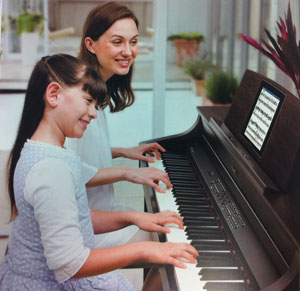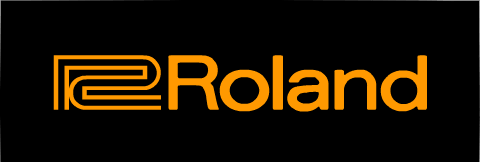|
Digital Pianos
This
page is designed for those who have reached this page not knowing what
a digital piano is or what it can do. If you’re not sure if
you would like a digital piano or an acoustic piano, please visit
our Digital vs. Acoustic page.
Call 630-584-5000
or stop in to let an experienced Cordogan’s sales
representative help determine what your specific needs are and give you
advice on what is the best instrument for your family and/or your
musical requirements!
Fact:
Digital pianos outsold new acoustic vertical pianos in the U.S. for the
first time in 1997, and the trend has continued since.
Fact:
A recent study showed 92% of all piano teachers polled
believed a particular manufacturer's digital piano model sounded better
or about the same as a new acoustic piano. Please contact Cordogan's
for specific information on this breakthrough study.
|
|
|
|
|
|
|
Fact: The
print music industry has researched and confirmed an interesting
statistic in music education materials: When it comes to
piano instruction books, for every ten “Level 1”
books sold, there are only 1.5 “Level 2” books
sold, representing an alarming dropout rate. However, when the books
are accompanied by computer software (indicating the student is on a
digital piano and using technology as a teaching aid), six
“Level 2” books are sold to every ten
“Level 1.” Obviously, book publishers are taking
note of the higher success rate of piano students who utilize
technology because it means more book sales for them. For piano
students young and old, it is a clear indication of the documented
effectiveness of music technology in learning piano.
Fact: When
it comes to Piano Method books, there is usually only one Level 2 book
sold for every TEN Level 1 books sold-- obviously not a great rate for
staying power! However, when the books are accompanied by a CD-ROM or
computer software (indicating the student is on a digital piano and
using technology as a teaching aid) Level 2 books sell at an
exponentially greater rate! Obviously, book publishers are taking note
of the higher success rate of piano students that utilize technology
because it means more book sales for them. For piano students young and
old, it should be a clear indication of the documented effectiveness of
music technology in learning piano.
Digital pianos and close relatives of the digital piano have evolved
quite a bit in recent years. The following terms and definitions are
what Cordogan’s and other industry professionals use to
distinguish between the different keyboard categories offered by
manufacturers. It is your crash course in digital piano terminology.
|
|
|
|
|
|
|
|
|
|
|
|
|
|
"Keyboards" —
Keyboards can be a fun way to explore
music. Typically found at consumer electronics stores, keyboards (often
referred to as "personal keyboards") usually have only 61 keys
— as opposed to 88 on a piano or a full digital piano, no
pedals, hollow organ-like keys (in other words not weighted like a
piano), and have a sound quality that, while good for its price range,
shouldn’t be compared to an acoustic piano or other digital
products.
Keyboards should really only be purchased as a musical toy or as a
means of inputting MIDI data into a computer. They should not be
purchased as a substitute for the purpose of getting someone started
with piano lessons (piano teachers, applaud here). The art and process
of learning to play the piano involves building the correct finger
muscles. This is not achievable without the authentically-weighted keys
of an acoustic piano or a high quality digital piano. In fact,
don’t be surprised if some teachers you contact refuse to
teach piano lessons to a student who acknowledges using a "keyboard" as
a practice instrument. While keyboards are convenient, inexpensive and
fun, they offer very little resemblance to the environment experienced
at an acoustic piano or at some digital pianos.
|
|
|
|
|
|
"Digital
Pianos" - Born out of the computer revolution, digital pianos
are the most exciting products to emerge in the piano industry since
the spinet was invented in the 1930s.
The concept of a digital piano is to reproduce the total environment
experienced when playing an acoustic piano without using strings or
12,000 parts, which help acoustic pianos to weigh 400-1000 pounds.
The means of accurately accomplishing this feat are difficult and
expensive since the sounds produced by a piano and the key action
mechanisms are very complex. To successfully recreate the experience,
some digital piano manufacturers go
to painstaking lengths to capture all the nuances of playing on an
acoustic grand piano. Some of the newest digital pianos are convincing
enough to win the hearts of musicians, teachers and beginners alike.
|
|
|
|
|
|
|
The
following features are in no particular order and are often
cited as the advantages of a digital piano versus an acoustic piano.
Not all digital pianos have the following features. Please consult a
Cordogan’s representative for the best model for your needs.
|
|
| Never
needs tuning. |
|
Save
upwards of $200 per year on the
semi-annual tunings needed for an acoustic piano.
|
| Headphones,
headphones, headphones! |
|
|
|
PC / iPod /
iPad connection for downloading of lessons and songs.
|
|
Students can go online
for live instruction, download free performances of the pieces they're
trying to learn or use interactive learning software. It’s
a whole new world of music education!
|
| Kids
love ‘em! |
|
And
why wouldn't they? It's hip, it's fun yet educational and offers
great flexibility. It's the computer generation's answer to the piano
much like snowboarding is the youth of today’s answer to
skiing. They both get you down the hill!
|
| Affordability |
|
A good digital
piano still costs less than a good acoustic piano. While it is true
that the investment value of a digital piano is likely to be less than
that of an acoustic piano, remember that hundreds — possibly more
than thousands — of dollars of tuning, maintenance & moving
costs over a, say 10-year period would be needed on an acoustic piano.
Figuring that into the resale value considerably narrows the gap
between the acoustic vs. digital resale levels.
|
| Portability |
|
Third story walk-ups are
a digital piano’s specialty. Gigging musicians, basement
placements, church groups, restaurants, banquet facilities, schools,
summer homes... if it needs to be moved, digitals create a compelling
argument.
|
| Authenticity |
|
Even
musicians and teachers are impressed by the authenticity on certain
models.
|
| Other
useful sounds such as pipe organ, harpsichord, strings, etc |
|
What
better way to learn baroque and classical pieces than by playing them
using sounds from that period? Some models offer up to 1000 or
more high-quality instrument sounds, giving the student the opportunity
to learn about ALL musical instruments – not just the
piano.
|
| On-board
song recorder |
|
Again, using recordings
to chart progress is priceless. Models with two-track recorders allow
for "hands-alone" playing, or "four-hand’ arrangements. E-mail
the performances/recordings to friends and relatives! Many models now
even allow you to record directly to a USB drive, creating MIDI files
(.mid files) and/or high-quality audio files (“.wav” files)
that can be easily shared, uploaded or simply archived.
|
| Automatically
transpose to any key |
| A
vocalist’s dream come true. |
| Teachers are endorsing them! (see Cordogan's for particular
models) |
|
The term “digital
piano” has been blurred by manufacturers in recent years. In our
opinion, it should be used to refer to an 88-key instrument
with a "weighted action," a built-in pedal assembly, sampled piano
sound and built-in speakers to carry the sound. This criteria provides
an environment that is a digital facsimile of an acoustic piano.
In an effort to bring prices down, however, manufacturers often sell
shortened versions (76-key or 61-key) which employ a compromised
"weighted action" and an inferior "sampled sound" that hardly resembles
that of a higher-end digital piano, much less that of a fine acoustic
piano. Incidentally, there is a place for these instruments in the
marketplace, it just doesn’t qualify as a "substitute for a
piano," which is the primary reason these are often
purchased.
|
|
|
|
|

"Digital
Ensembles" —
This is a unique product category which typically includes
products that have built-in USB drives, rhythms, auto-play features and
hundreds of sounds. Is it for you? Maybe. They are well-designed for
the absolute beginner as well as for the professional player. A good
digital ensemble is capable of involving the whole family on many
different levels:
|
| For
a piano student, it’s a piano, first and foremost. |
|
They can practice their
lessons using the sampled sound of a $110,000 concert grand piano. They
can even record their practices with the on-board recorder to listen
and analyze.
|
| The
play-a-long features |
|
...to
sound like they’re an ace,
when in fact, they’re actually being assisted by the on-board
computer.
|
| An
advanced player can write, arrange and SCORE music on it... |
|
...save the songs onto a
USB stick, play in your music and have it scored automatically, and
e-mail them or post them to a web site!
|
| A
family member who is learning a string, woodwind or brass instrument
can use it as a virtual accompanist... |
|
|
| A
family member who sings can use the on-board microphone input and vocal
effects processor (certain models only)... |
|
...to sound like
they’re singing through a multi-thousand dollar P.A. system.
Auto-tune and auto-harmonizer are also available on some models these
days!
|
| Parents
can make recordings of their children’s progress. |
|
"Megan’s Spring
Recital, Fall 2012,” the USB thumb drive might say. What better
gift to pass on to them than the power of their own music captured
digitally. Isn’t this why families take videos? Added bonus: You
can e-mail the performances to their Aunt Sally in Topeka or to
Megan’s best friend who moved away.
|
| All
skill levels can benefit from software designed to assist in various
activities... |
|
...- from software
accompanied by standard teaching method books to play-a-long songbooks
containing the music and removable media. Certain models have built-in
lesson tools and full-color touch screen displays. Not to mention video
output options which allow you to view the lesson software on your
TV!
|
|
Digital ensembles can be
an excellent way for the whole family to learn and explore music. To
learn more about digital pianos or ensembles, please visit your nearest
Cordogan’s location!
|
|
***
Chicago Pianos.com: info@chicagopianos.com
©2017
Chicagopianos.com/Cordogans All
Rights Reserved.
No part of this site may be published, broadcast, paraphrased,
rewritten or redistributed
in any form without prior written permission from Chicagopianos.com/Cordogans.
Please report problems to the Webmaster at support@chicagopianos.com
|
|
 |
 |







